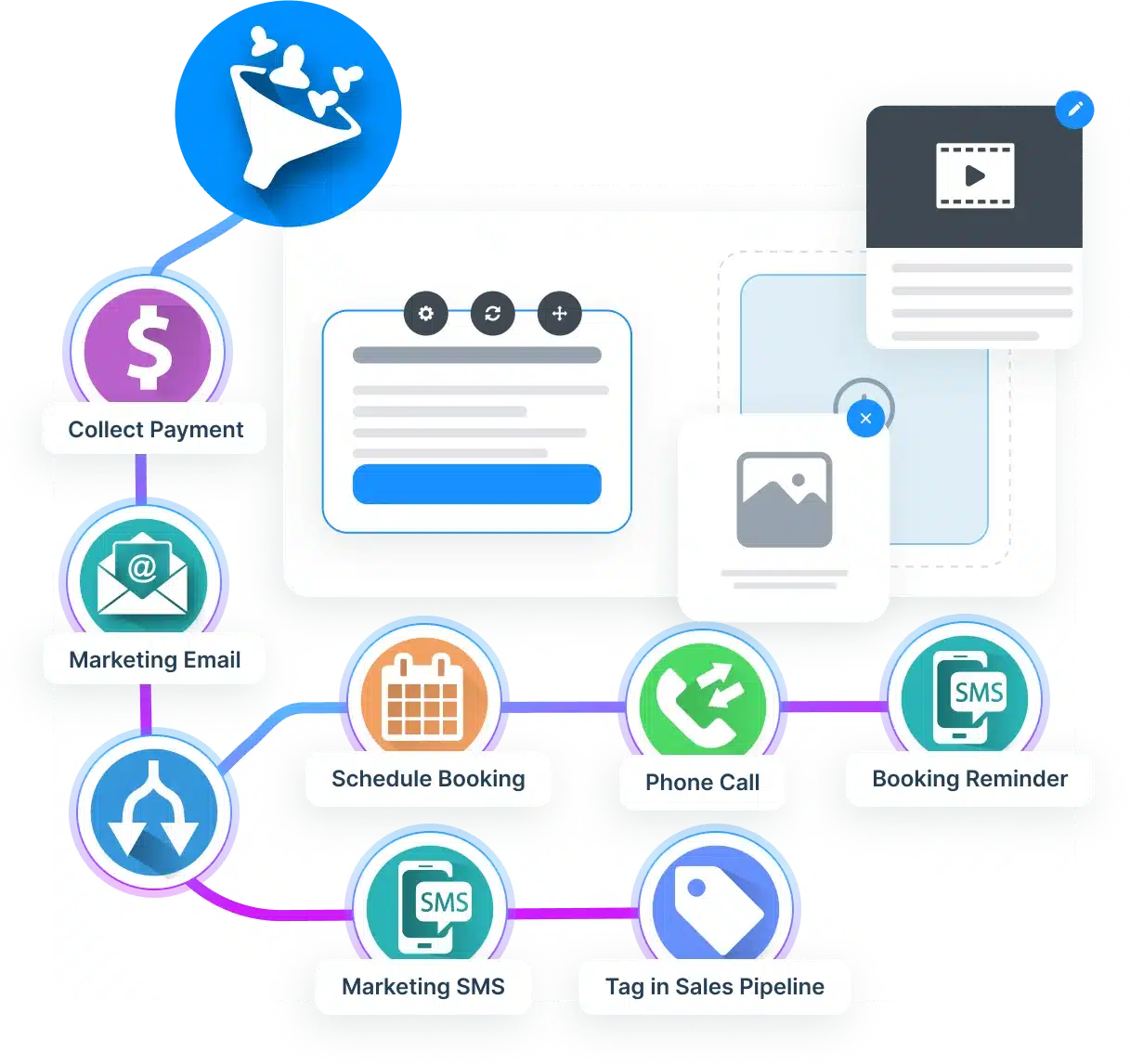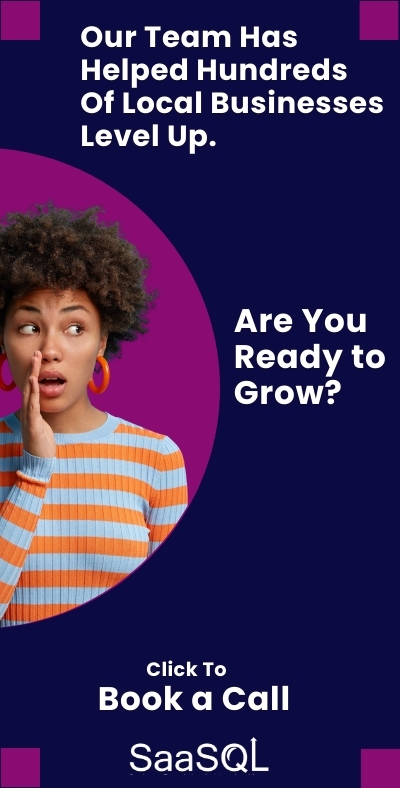Imagine turning every customer interaction into a lead generation opportunity. That’s the power of CRM Strategies for Lead Generation. We’re about to embark on an exploration of how leveraging CRM technologies can revolutionize your strategy for identifying and cultivating prospective clients. From automating the tedious parts of lead nurturing to tracking crucial metrics that spotlight your campaign’s success, you’re about to unlock strategies that could significantly bump up your conversion rates. You’ll get insights on selecting a CRM tool tailored just right for your business size and niche, ensuring you’re not just shooting in the dark but hitting targets with precision. Ultimately, CRM strategies for lead generation are about customer experience and the systems you can establish to manage customer interactions in a way that turns them into lasting connections.
Table Of Contents:
- Understanding CRM and Its Role in Lead Generation
- How to Automate the Lead Nurturing Process with CRM Tools
- How to Measure Success Through Key Metrics in Your CRM
- What Are The Common Mistakes Businesses Make When Using CRM Strategies for Lead Generation
- Wrapping Up
What is The CRM Role in Lead Generation?
If you’ve ever wondered how some businesses seem to have a magic touch when it comes to connecting with potential customers, the secret often lies in their Customer Relationship Management (CRM) strategies for lead generation and nurturing. It goes beyond merely cataloging contact information; it’s about crafting meaningful connections. It’s an art form that combines technology, psychology, and good old-fashioned customer service.

The Basics of CRM
Fundamentally, CRM platforms revolve around fostering and nurturing connections with clients, blending elements of tech, human understanding, and stellar service. Think of it as your digital Rolodex on steroids. But instead of just storing contact info, modern CRM tools let you track every interaction—emails sent, calls made, purchases completed—and use this data to create a comprehensive picture of each customer’s journey. This up-to-date view is crucial for making informed decisions that improve lead generation efforts.
By understanding where each potential customer stands in the sales funnel—from first contact through conversion—you can tailor your approach to meet their specific needs. And let’s not forget the power of integrating CRM across various platforms. From social media interactions to email marketing campaigns, these systems provide valuable insights into what makes your audience tick.
CRM’s Impact on Lead Generation
Leveraging a solid CRM strategy does more than keep things organized—it transforms how you generate leads and move them down the sales pipeline. With detailed records at your fingertips provided by enhanced collaboration between marketing campaigns and sales activities via CRMs like SaaSQL or Systeme.io Blog, tailoring messages becomes second nature.
Data accuracy plays another key role here; no one likes getting bombarded with irrelevant offers or follow-up emails that miss the mark because someone didn’t record their preferences correctly after an initial inquiry. Improved data management means less time wasted on manual tasks such as data entry—freeing up valuable time for strategic thinking rather than rote inputting information into databases.
A study highlighted by Signity Solutions Blog suggests leveraging sophisticated software solutions equipped with features like lead scoring can significantly boost conversion rates by providing deeper insights into prospective clients’ behavior patterns before they even make direct contact.
Benefits of Automation in Lead Nurturing
Gone are days when nurturing leads meant sending out generic blasts hoping something sticks—the future is personalized automation. Tools included within most leading CRMs enable savvy marketers to set up sequences tailored around individual user actions or lack thereof; if someone visits certain pages but doesn’t sign up or purchase anything?
How to Automate the Lead Nurturing Process with CRM Tools
Imagine a world where your sales team doesn’t spend half their day on tedious tasks. That’s not just wishful thinking; it’s what automating lead nurturing can do for you. By leveraging CRM automation, businesses are seeing up to 30% more free time for their sales teams, which they can then use to close deals rather than juggle data entry. This efficiency isn’t about cutting corners; it’s about smartly reallocating resources where they’re most needed – engaging and converting potential customers. Personalizing lead nurturing strategies becomes a breeze when you have technology that learns from every interaction, ensuring no two customer journeys feel the same. The following are some CRM strategies for lead generation, that really focus on nurturing contacts.
Drip Campaigns: Design a series of personalized emails sent automatically based on lead actions (e.g., website visit, content download). Set triggers, schedule content, and watch engagement soar!
Lead Scoring & Segmentation: Automate lead scoring based on website behavior, email engagement, and qualification questions. Segment leads automatically into groups for targeted communication.
Dynamic Content: Deliver personalized messages without manual effort. Use lead data to tailor emails, website landing pages, and even social media ads for maximum impact.
Lead Management Automation: Automate tasks like contact creation, lead routing, and activity logging. Free up your team to focus on high-value interactions.
Calendar & Reminders: Set automated reminders for follow-up calls, emails, or tasks based on lead engagement or inactivity. Never miss a nurturing opportunity! Reporting & Analytics: Track key metrics (open rates, clicks, conversions) automatically. Gain valuable insights to optimize your campaigns and boost ROI.
The Key Benefits of Leveraging these CRM Automation Features
It all comes down to three key outcomes. Nurture more leads in less time. It’s all about increased efficiency. Deliver personalized experiences at scale. Improve campaign efficiency and effectiveness. Free up your team for strategic initiatives. Remember, automation is a tool, not a replacement for human touch. Use it to streamline tasks, eliminate manual data entry, personalize communication, and ultimately, convert more leads into happy customers. The beauty of CRM tools lies in their ability to handle repetitive tasks without breaking a sweat. This means follow-up emails that used to take ages to personalize now go out promptly and accurately, increasing engagement rates and keeping your brand top-of-mind for prospects.
How to Select The Right CRM Tool for Your Business Size and Industry
Picking the right tool is crucial because not all CRMs are built alike. The needs of a small startup will differ vastly from those of an established enterprise, so understanding these nuances is key. You’ll want something scalable but also packed with features like email marketing integration, social media monitoring, and detailed analytics.
Here’s how to ensure it aligns with your unique business needs:
Know your size: Startups and small businesses prioritize ease of use and affordability, while larger companies need scalability and robust features. Research options like HubSpot, Zoho CRM, and Salesflare for smaller teams, or Salesforce, Microsoft Dynamics 365, and Oracle NetSuite for enterprise needs.
Consider your industry: Different industries have specific requirements. Healthcare needs patient data compliance, while real estate demands property management features. Explore industry-specific solutions like CareCentrix for healthcare or REmanage for real estate.
Prioritize your must-haves: Identify core functionalities crucial for your operations. Do you need contact management, sales pipeline tracking, marketing automation, or specific integrations? Narrow down your options by feature sets.
Don’t underestimate demos: Trying before buying is key. Request demos from shortlisted vendors to assess user interface, functionality, and support options. Get a hands-on feel to guarantee a seamless fit.
Remember, resources are your friend: Leverage expert insights! Check out Capterra’s CRM comparison tool (https://www.capterra.com/customer-relationship-management-software/) and G2’s buyer guides (https://www.g2.com/categories/crm) for in-depth reviews and industry-specific recommendations. With a clear understanding of your size, industry needs, and priorities, and through careful research and trial runs, you’ll find the CRM that becomes a powerful partner in your lead generation and nurturing efforts. Businesses on a tight budget might check out SaaSQL’s Free Marketing Automation Platform & CRM.
How to Measure Success Through Key Metrics in Your CRM
To truly understand if your CRM lead generation strategy is paying off, you need clear visibility over certain metrics within your CRM software. Conversion rates stand at the forefront here since they directly reflect how effectively leads move down the funnel towards becoming customers—a good indication that people aren’t just hearing about you but are interested enough to engage further.
Beyond mere numbers, though, lies qualitative feedback of your lead generation process, which could reveal why some tactics work better than others or highlight specific pain points in customer interactions—all invaluable information helping continuously improve and tailor our strategies to meet the real needs of those we serve. By actively listening and adapting based on this rich feedback, we can truly make a difference.
Understanding whether your lead nurturing efforts are working requires tracking the right metrics in your CRM. Focus on these key indicators to measure ROI and optimize your campaigns:
Improve Customer Engagement: Open rates and click-through rates: See if your content resonates by tracking email engagement. Low numbers suggest a need for better personalization or subject lines.
Lead score changes: Observe how lead nurturing impacts their qualification level. Are leads moving closer to conversion?
Content downloads and website visits: Track interactions with nurturing materials to assess interest and gauge content effectiveness.
Conversion: Conversion rate by campaign/channel: Analyze which lead-nurturing tactics convert best, revealing your strongest channels and messaging.
Time to conversion: Monitor the average time it takes leads to convert after entering your funnel. Identify bottlenecks and optimize nurturing timelines.
Cost per lead (CPL): Divide marketing spend by the number of converted leads to understand the economic efficiency of your nurturing efforts.
Sales-qualified leads (SQS) generated: Track how many nurtured leads become viable sales opportunities, demonstrating the campaign’s impact on the sales pipeline.
Customer lifetime value (CLTV): Analyze the revenue generated by customers acquired through lead nurturing campaigns, revealing long-term impact. Remember, don’t track everything; effective lead generation starts with choosing the customer data points that are relevant to your goals and campaign stage.
By monitoring these key indicators, you’ll gain valuable insights to fine-tune your nurturing strategy and maximize your return on investment. For deeper insights into crafting killer CRM strategies for lead generation make sure to check out Systeme.io Blog.
Focusing on Qualified Leads: Quality Over Quantity
In this world inundated with data, quality trumps quantity every time when it comes to leads. You could have thousands hitting your site daily but without honing in on those genuinely interested—the qualified leads—you’re basically trying to fill a sieve with water. This is where effective tracking within CRMs shines brightest. By filtering through interactions based on predefined criteria (like engagement level or specific actions taken), CRMs help separate wheat from chaff.
Here’s how you can identify qualified leads:
Define your ideal customer profile (ICP): This describes your ideal buyer in terms of demographics, firmographics, needs, challenges, and budget. Think of it as a detailed portrait of your perfect customer.
Use lead scoring: Assign points to leads based on their fit with your ICP and actions they take (e.g., downloading content, attending webinars). High-scoring leads are likely more qualified.
Utilize lead qualification questions: During sign-ups or initial interactions, ask questions about their needs, budget, and decision-making authority. Responses will reveal their fit and intent.
Track website and engagement data: See which content they engage with, what pages they visit, and how long they stay. High interest in relevant content indicates potential qualification.
Leverage lead enrichment tools: These tools gather additional data on leads, like company size or job title, further refining your understanding of their fit.
Pay attention to intent signals: Look for signs of purchase intent, like downloading pricing guides or requesting demos, which indicate a higher level of qualification. By implementing these methods, you can shift your focus from quantity to quality leads, setting yourself up for higher conversion rates, faster sales cycles, and ultimately, increased success.
What Are The Common Mistakes Businesses Make When Using CRM Strategies for Lead Generation?
CRM strategies for lead generation have the power to redefine the success of any business- but even the best platform is only as effective as its users. So, before you jump in, let’s learn from some common mistakes businesses make:
1. One-Size-Fits-All Communication: Blasting generic emails to your entire lead base is a surefire way to get ignored. Segment your leads based on demographics, interests, and engagement to send highly personalized messages that resonate.
2. Data Neglect: Inaccurate or incomplete lead data cripples your nurturing efforts. Implement clear data entry protocols, regularly clean your database, and leverage lead enrichment tools to ensure your information is actionable.
3. Underutilizing Automation: CRMs offer powerful automation features for drip campaigns, lead scoring, and task management. Don’t just manually send emails – leverage automation to save time and personalize communication at scale.
4. Missing the Multi-Channel Opportunity: Email isn’t the only game in town. Integrate your CRM with social media, marketing automation platforms, and even SMS to engage leads across multiple channels, tailoring your approach to each medium.
5. Neglecting Follow-Up: Leads get busy, so timely follow-up is crucial. Set up automated reminders and leverage the CRM’s reporting tools to identify leads who haven’t engaged in a while, allowing you to reach out proactively.
6. Ignoring Analytics: To generate leads, you can’t improve what you don’t measure. Track key metrics like open rates, click-through rates, and conversions to understand what’s working and what’s not. Adapt your campaigns based on data-driven insights.
7. Forgetting the Sales Handoff: Ensure smooth communication between marketing and sales. Use the CRM to share lead information, engagement history, and key qualifying details to create a seamless transition for nurtured leads ready to convert.
Remember, mastering lead nurturing with a CRM is an ongoing process. By avoiding these common pitfalls and continuously optimizing your approach, you can turn your CRM into a powerful tool for driving conversions and boosting your bottom line.
Learning From Other Businesses: Successful CRM Strategies for Lead Generation
Case Study: Fitness Studio Boosts Conversions with Personalized Lead Nurturing in CRM
Challenge: “Pump It Up,” a local fitness studio, struggled to convert website leads into paying members. Their generic email blasts resulted in low engagement and few sign-ups. They needed a targeted approach to nurture leads based on individual interests and goals.
Solution: Pump It Up implemented a CRM with lead scoring and segmentation features. They captured website visitor data (interests, goals, preferred class types) and segmented leads based on these criteria. Personalized email campaigns were then sent using the CRM, featuring relevant classes, special offers, and success stories aligned with each segment’s interests.
Results:
- 30% increase in lead engagement: Personalized emails with targeted content resonated better with leads, leading to more opens and clicks.
- 25% rise in conversion rate: By receiving relevant information and offers, leads were more likely to convert into paying members.
- 50% boost in attendance: Personalized recommendations encouraged members to try new classes and participate more actively.
- Improved member retention: Personalized communication fostered stronger relationships, leading to longer memberships.
Key Takeaways: Leveraging CRM for lead segmentation and personalization significantly improved lead nurturing and conversion rates for Pump It Up. Tailoring communication to individual needs and interests increased engagement and action. CRM data insights helped Pump It Up better understand their audience and provide relevant offerings, leading to increased member satisfaction and retention.
Wrapping Up
Summing it up, introducing automation into the mix significantly ramps up productivity. Metrics guide decisions. Right tools make all the difference when it comes to lead generation strategies.
Harnessing the power of CRM can transform your lead nurturing efforts, boosting conversions and maximizing ROI. Start by defining your ideal customer and identifying qualified leads who are a good fit. Utilize lead scoring, segmentation, and data enrichment to refine your targeting. Then, unleash the power of CRM automation through drip campaigns, personalized content, and automated tasks to nurture leads efficiently and at scale. Finally, track key metrics like engagement, conversions, and time to conversion to measure progress and optimize your campaigns for continued success.
Remember, a quality-focused approach with the right CRM tools at your side can turn your lead nurturing efforts into a powerful engine for driving business growth. If you’re set on boosting those conversion rates and fostering lasting customer relationships, these insights are your first step forward.










